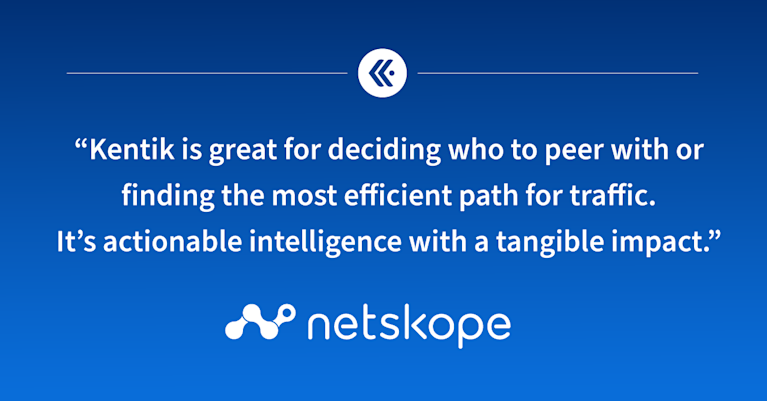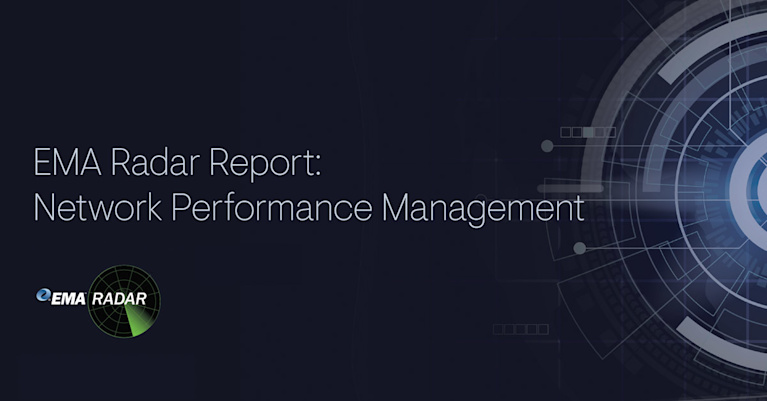Network Capacity Planning 101: Requirements & Best Practices


Summary
In this post, we look at the best practices for an effective capacity planning solution that ensures optimal network performance and visibility.
Modern networks are made up of a collection of routers, switches, firewalls, and other network elements. While they are all configured to maintain the best possible network performance, availability and throughput — both inside the boundaries of the internal network and across links to other networks — operations teams leverage network capacity planning to identify potential shortcomings, misconfigurations, or other parameters that could affect a network’s availability or throughput within a forecasted timeframe. From a high-level perspective, network operators engage in network capacity planning to understand some key network metrics:
- Types of network traffic
- Capacity of current network infrastructure
- Bandwidth utilization at various points in the network
- Current network traffic volumes for both the internal network and connectivity to external networks
The definitive guide to running a healthy, secure, high-performance network

How capacity planning benefits your network performance
By performing this type of network profiling, operators are able to understand the maximum capability of current resources and the impact of adding incremental new resources needed to serve future bandwidth demand and requirements. While capacity planning helps with the identification of new network infrastructure, it can also help to identify additional staff or resources that will manage and monitor the network.
A few network capacity planning best practices
- Establish the degree to which sources, destinations, network devices, users, applications, protocols, and services are generating traffic. Accurately assess the network impact and traffic volumes of new services.
- Measure and analyze traffic metrics to establish performance and capacity baselines for future bandwidth consumption.
- Assure optimal application service delivery by identifying network bottlenecks before they impact service.
- Understand the impact of network bandwidth utilization from a user’s perspective, including application performance KPIs and SLAs.
- Identify the network performance profile of individual devices on network infrastructure.
- Understand and assess the limits of your load balancing equipment so your CPU/memory usage doesn’t get strained and impact latency or network downtime.
Key metrics for planning network capacity
Network operations teams often set a baseline for network performance. A key question they ask is: What is expected of the network when it is working properly? (Operating a network is a complex endeavor and, regardless of how much planning takes place, problems do occur that lead to costly network downtime.) Network engineers determine optimal performance thresholds, which can then be utilized by network management tools. Key metrics include:
- Bandwidth — the maximum rate that information can be transferred, typically measured in bits/second
- Throughput — the actual rate that information is transferred
- Latency — the delay between the sender and the receiver
- Jitter — the variation in packet delay at the destination source
- Packet loss — measured as a percentage of packets lost with respect to packets sent
- Error rate — the number of corrupted bits expressed as a percentage or fraction of the total sent
When a threshold for a key performance metric is reached, the icon for a network element within a capacity planning tool’s interface may display as red, and depending on the severity of the event, may also issue an alert.
Key capacity planning solution requirements
Key requirements for capacity planning solutions will vary to some degree based on the type of organization using it. For example, an enterprise, depending on its size, may need to understand WAN usage, ISP uplink capacity, east-west data center hotspots, and inter-data center adequacy.
For ISPs, looking at network utilization is crucial to formulating business insights when connecting to other ISP networks. ISPs regardless of their network interconnection type (e.g. transit, backbone, paid peering, or free peering) all need to assess their network utilization in order to forecast business impacts. To ensure network operators can readily take action on insights from capacity planning tools, key requirements to look for in a solution include:
- Built-in link utilization visualizations
- Ability to set the level or granularity of reporting on network elements
- Ability to create thresholds using customizable performance metric values
- Predictability of time frames when full utilization of network resources is forecasted to happen
- Automatically set alert thresholds based on trend data
- Dynamic reporting of performance metrics based on built-in or custom on-the-fly dimensions
- Ability to formulate a custom report and email on a recurring basis
- Organization of key capacity planning metrics as a customizable dashboard interface
Why network capacity planning is essential for your business
The business value of network capacity planning cannot be underestimated. Being able to quickly focus on network bottlenecks in a timely manner has a direct correlation to user satisfaction and optimizing network infrastructure expenditures. However, gathering data on networks can be an overwhelming task and a network performance monitoring tool is necessary to keep track of all the factors that impact your network.
Kentik has the functional breadth for capturing all the necessary network telemetry in a big data repository to isolate even the most obscure capacity impacting network events — as they happen or predicted in the future. Network visibility is key to facilitating capacity planning. To see how Kentik’s capacity analytics can help your organization analyze, monitor, and adjust to network capacity patterns, read our blog post on improving capacity management, request a demo, or sign up for a free trial today.
Learn more about using Kentik for network capacity planning use cases here.


